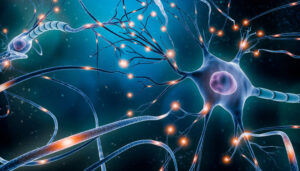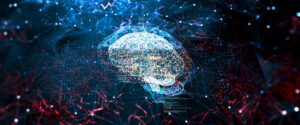

The study of neuroscience and behavior strikes at the heart of what it means to be human, intersecting with broad liberal arts topics like religion and philosophy. Understanding neuroscience and behavior also requires the application of the latest advances in biology, physiology, anatomy, and even mathematical modeling and computer science; additional subjects that are central to a well-rounded liberal arts and sciences education.
In true liberal arts fashion, a look at the fields of neuroscience and behavior starts with a look through the lens of history, particularly the development of medicine. From there we can trace a thread through the millennia up to the present.
Leaps and bounds have been made in just the past hundred years in the fields of neuroscience and behavior. Modern technology and computing power mean that right now is the most exciting time to be involved in these fields. Going forward we’re going to be able to answer fundamental liberal arts questions about the nature of consciousness, perception, feelings, and existence.
A Liberal Arts and Sciences Perspective of the Origins of Neuroscience
 Today we can all be thankful that neuroscience has evolved well beyond the ancient Egyptian practice of drilling holes in peoples’ heads.
Today we can all be thankful that neuroscience has evolved well beyond the ancient Egyptian practice of drilling holes in peoples’ heads.
The father of medicine, the Classical Greek Hippocrates –on whose name all doctors today swear a solemn oath to “do no harm”– is regarded as the first person who conceptualized the brain as being the center of human consciousness and base of intelligence, rather than the heart or other organs. However, this view did not immediately gain widespread acceptance.
In fact, Aristotle, Hippocrates’ contemporary, maintained that the heart was the center of human consciousness. It wouldn’t be until about 500 years later that the Roman Galen, after observing brain-damaged gladiators, would reinforce Hippocrates’ theory about the brain and consciousness, bringing it into the mainstream.
Galen (129 AD to 216 AD) played an important role in identifying the brain with neuroscience and behavior. This concept was bolstered over the centuries from contributions across different civilizations and cultures throughout the world.
Neuroscience and Behavior Come Into the Modern Age and Intersect with the Liberal Arts
Despite incremental progress, fundamentally new paradigms of understanding about the brain and consciousness could not advance until the discovery of the properties of electricity. This wouldn’t happen until seventeenth-century Europe, and wouldn’t be applicable to neuroscience until a further century later. Then a string of developments occurred in relatively rapid succession:
- In 1843 the German doctor Emil du Bois-Reymond established the relationship between electricity and nerves.
- In 1865 the French doctor Paul Broca published a paper establishing that different areas in the brain were responsible for different functions; in his case he identified the speech area of the brain that is now named after him.
- In the years just before 1900 individual neurons in the brain were observed under a microscope for the first time.
- In the 1950s David Rioch, an American neuroanatomist and psychiatric researcher, combined an understanding of brain anatomy with an understanding of clinical psychiatry, a hallmark feature of neuroscience today.
By the 1960s prominent schools across the United States were establishing their own neuroscience programs that combined biology, mathematics, psychiatry, chemistry, and physics under one liberal-arts roof for an applied study of the brain.
Advances in the Understanding of Behavior Parallel Neuroscience – A Liberal Arts Context
 The related scientific study of behavior made advances over a similar period of time as those made in neuroscience. Though basic perceptions of psychology have existed in every human culture, the science of experimental psychology was established around the mid-nineteenth century.
The related scientific study of behavior made advances over a similar period of time as those made in neuroscience. Though basic perceptions of psychology have existed in every human culture, the science of experimental psychology was established around the mid-nineteenth century.
Behaviorism as a sub-branch of psychology soon followed, based on the theory that peoples’ observed behaviors were a physical response to stimuli, solidified by psychologist John Watson in 1924.
In the 1930s psychologist B. F. Skinner took this a step further, suggesting that thoughts and emotions were also responses to physical stimuli. This marked an important turning point in the history of understanding human behavior. The essence of what it meant to be human had been taken out of the realms of the supernatural, ethereal, and religious and placed within the purview of science to be understood through testable hypotheses based on physical reality.
By the 1960s the pieces were in place to make the connection between physical events in the brain and behavior; it was realized that our consciousness and thoughts are a sum of physical reactions that take place in the brain. Today this realization still has profound implications about religion and philosophy, placing it squarely in the domain of the liberal arts.
Looking Towards the Future of Neuroscience and Behavior with the Liberal Arts and Sciences
“The last frontier of the biological sciences – their ultimate challenge – is to understand the biological basis of consciousness and the mental processes by which we perceive, act, learn, and remember.”
–Eric Kandel, recipient of the 2000 Nobel Prize in Physiology or Medicine for his research on memory storage in neurons
At first it may seem disheartening to think we’re essentially carbon-based electrical processors. But this is simply describing reality. It doesn’t change our exceptionalism; the fact that our existence, consciousness, self-awareness, and our ability to think, express emotions, and be creative is exceptional. With our present understanding we’re the only beings in the universe with these capabilities.
There are also many exciting mysteries remaining to be discovered in the fields of neuroscience and behavior. There couldn’t be a more exciting time than the present to be immersed in these fields.
Between now and the next century, thanks to advancements in computing, electronics, and medicine, it’s possible that we’ll have solved many significant brain disorders:
- Parkinson's disease
- Dementia
- Alzheimer's disease
- Depression
- Schizophrenia
Even with technologies like magnetic resonance imaging (MRI), right now neuroscience researchers hit an ethical brick wall when it comes to directly measuring individual neurons and neural pathways in the working brains of living people. Doing this is a must to understanding today’s most pressing questions about brain disorders.
Until very recently the only way of doing that wasn’t much better than the ancient Egyptians; it was literally to drill a hole in a person’s skull the size of a quarter.
 Today a laser can make a hole the size of a single hair; less than 100 microns wide. However the obstacle of gaining safe access to target neurons still remains. Viable solutions, like a flexible hair’s-width probe, are probably just around the corner.
Today a laser can make a hole the size of a single hair; less than 100 microns wide. However the obstacle of gaining safe access to target neurons still remains. Viable solutions, like a flexible hair’s-width probe, are probably just around the corner.
Once individual neurons can be safely accessed in the human brain it’s theorized it will be possible to map the entire human brain neuron by neuron. This will revolutionize our understanding of neuroscience, in addition to finding solutions for most brain disorders.
Once the brain is completely mapped the physical scaffold for everything from emotions to memories to behavior will become known. Access to individually-targeted neurons means the likely eventual ability to manipulate individually-targeted neurons. This means all of the following will become possible:
- Memories and knowledge will be able to be artificially created and implanted, and likewise erased
- A Matrix-like scenario will become possible where people’s brains can be hooked up to a virtual reality network
- Behaviors and emotions can be downloaded and manipulated
- “Telepathy” can exist; that is, non-verbal thoughts can be transmitted over a wifi network from person to person
- A biological brain’s map can be converted to a digital silicon-based map, at which point it can be stored in a computer indefinitely (immortality) and transmitted at light speed throughout the universe
Profound issues like these need to be grappled with in an intersectional liberal arts context. No single domain, whether religion, philosophy, or science, is cut out to do the job on its own.






